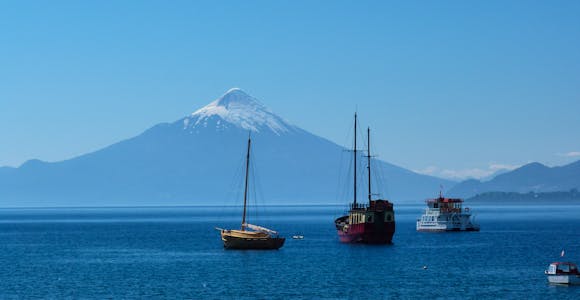
Puerto Varas
Perched on the shores of Lake Llanquihue and overlooked by the Osorno and Calbuco volcanoes, Puerto Varas is the perfect gateway to the Chilean Lake District.
Discover MoreDeep roots in Patagonia: We are ex-guides, tour leaders, outdoor enthusiasts, & adventurers.
We’ve got our feet on the ground: Impartial advice, a bespoke service, and at no extra cost.
For the ends of the Earth: Sustainability is more than our carbon footprint (but we’re reducing that too).
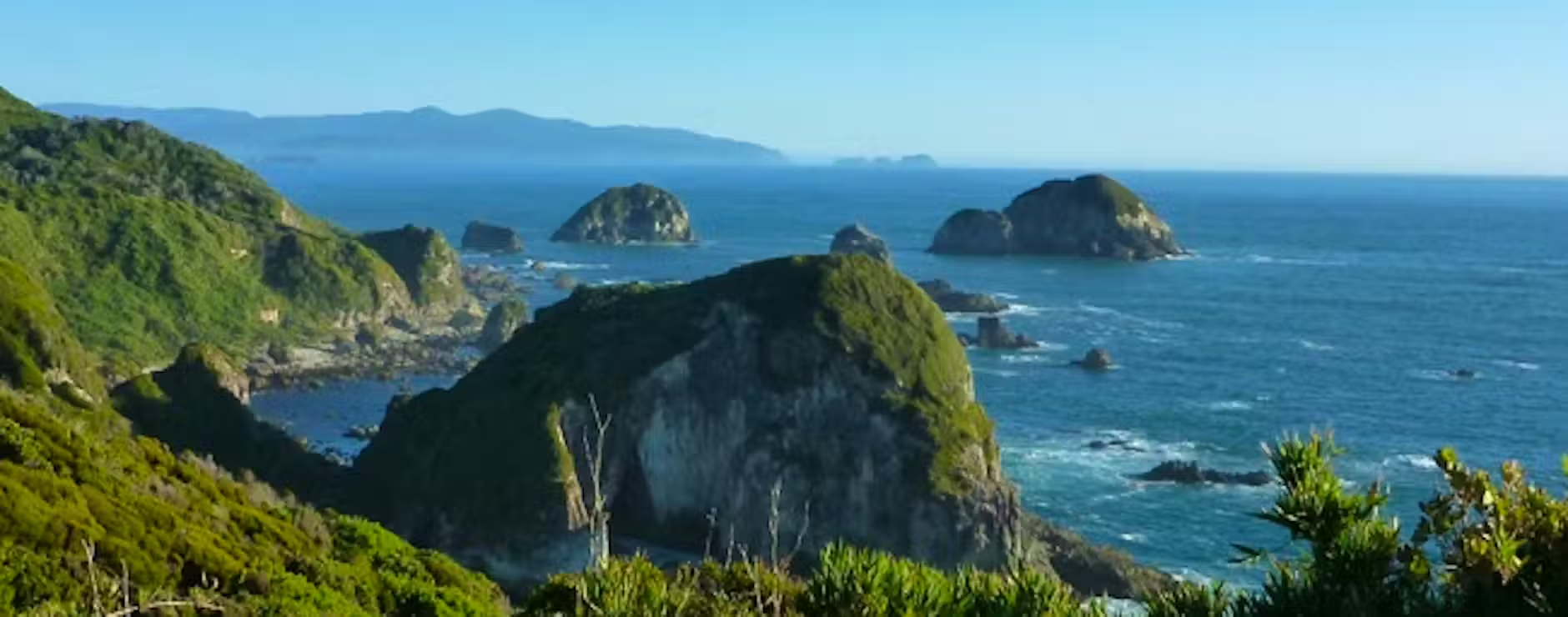
As an island cut off from the rest of Chile, life on Chiloé feels like an escape from everything. Life here is still traditional and slow paced, the food is home-grown, the fish freshly caught and there is always time for a friendly wave to passers-by. Travellers heading here can get off the beaten track to hike its wild coasts, rich forests and enjoy great wildlife watching.
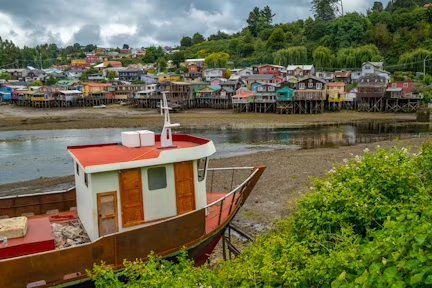
Palafitos in Castro, Chiloé
Chiloé is the third largest island in South America, and although it's only a short flight or ferry ride from the mainland it offers a dramatically different spectacle to the rest of Chile.
The landscape here is completely different to that of the rest of Chile, which is dominated by the Andes. Here there are vast temperate rainforests draped with a profusion of ferns, lichens and mosses, enormous stands of wild bamboo and great numbers of birds and small mammals. The west coast facing the Pacific Ocean is Chiloé’s wild side, while the more settled east is all about rolling hills dotted with small holdings and fjords.
Fishing remains a mainstay of the economy. Many villages on the east coast are still full of palafitos (traditional stilt houses) and fine wooden churches dating from the 19th century.
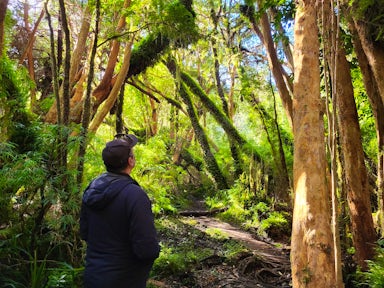
Hiking trail in Tepuheiuco Reserve
Chiloé is a brilliant hiking destination. One of the best places to get away from it all is by hiking along its rugged Pacific coastline, where the rich mossy greens of the forests provide the perfect contrast to its surf-pounded beaches.
A perfect place for hikes is at Tepuhueico Park, which consists of pristine temperate rainforest dripping with ferns, mosses and evergreens and full of birdsong, as well as a dramatic coast lined with jagged cliffs. Part of the park is a private reserve (where it’s possible to stay), which contains a network of hiking trails. There is a good chance of seeing Darwin’s fox and pudu here.
Near the north of the island, there is excellent hiking to be had at Chepu River. One recommended hike takes you through forest to the beach, where you’re picked up by a small boat; a second one leads from Chepu to a Magellanic penguin colony. Alternatively, head for Chiloé National Park, with its wild dunes and winding trails.
The eastern side of the island has a softer and more open landscape, crinkled with fjords. Hiking on the coast here offers the chance to spot dolphins from the shore.
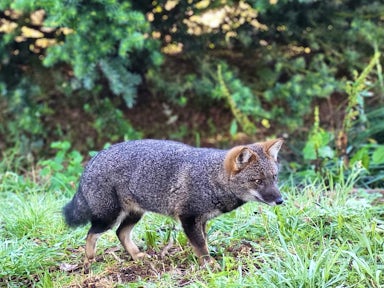
Darwin's fox on Chiloé
Chiloé's coastline, wetlands and forests offer some of the richest wildlife watching in Southern Chile.
One big wildlife highlight for Chiloé is the number of mammal species it’s possible to see. Darwin’s fox was first described by the great naturalist here in 1834. Although rare, sightings are not uncommon in Tepuhueico Reserve, along with the the pudu, the world’s smallest deer. Visitors to Chiloé may also see the endemic Patagonian river otter and if lucky the kodkod – South America’s smallest cat (also known as the guiña).
Marine species shouldn't be forgotten: South American sea lions are common along stretches of the coast, along with the Chilean dolphin. The wide channel facing the fjords of the mainland is also known for blue whales, who pass through in the Patagonian summer to their nursery grounds in the Corcovado Gulf.
One of Chiloés main birding attractions is at Puñihuil, three islands off the northwest coast that are the only place in the word where both Magellanic and Humboldt penguins gather together to breed. The wetlands of the Caulín Bird Sanctuary also offer particularly good birdwatching, along with the many forests where you can hike with guides while spotting birds and learning about the native flora.
Chiloé’s endless forests truly surprised me. You can very visibly see the parts of the island humans have grasped and those that were left wild. Seeing hill after hill of green and being immersed amongst all the ferns, lichens and mosses gave me great hope that nature may actually be able to win this battle.
Harriet Pike Head of Swoop Patagonia
Chiloé’s long history outside the mainstream of Chilean life has allowed it to maintain a strong cultural identity that’s unique in the country, blending together indigenous Mapuche, colonial Spanish and Germanic influences.
The Jesuits left one of the most visible marks on the island through their construction of Chiloé’s iconic wooden churches – 16 of which have been collectively listed as a World Heritage site by UNESCO. The vernacular architecture is just as notable: in coastal towns and villages, brightly painted stilt houses called palafitos were built over the water, a smart design that allowed fishermen to tie up their boats below and walk out of their front door onto the street above. Some of the best can be found in Chiloé’s capital, Castro.
The influence of the sea also looms large in Chilote cuisine. All visitors should try a bowl of curanto,
a rich stew of meat, fish and potatoes traditionally prepared in an
underground oven. Stones are heated in a firepit and then overlaid with
the ingredients and covered with thick layers of leaves and then earth
to allow the meal to slowly steam for several hours. A bowl of curanto is the particularly enjoyable after a long day exploring the coast and country, or souvenir shopping at Chiloé's most famous Sunday market at Dalcahue.
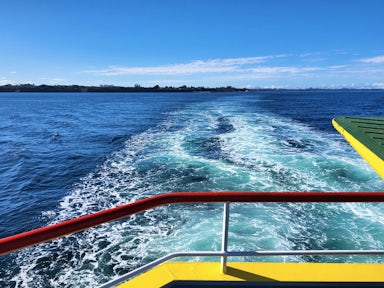
Catching the ferry to Chiloé
By Air
Chiloé is easily accessible by air. The best option is to head straight to Castro’s Mocupulli airport (code MHC) on one of the three flights a week from Santiago, taking just under two hours. A slower alternative is to fly Santiago to Puerto Montt’s Tepual airport (code PMC) on the mainland, and take the ferry to Chiloé. Puerto Montt also has regular flights to Punta Arenas, the access point to Torres del Paine.
By Ferry
Despite talk of a long-planned bridge to the island, a 30-minute ferry is currently the only way to reach Chiloé by vehicle from the mainland. Two companies run regular car ferries between Pargua, 62km south of Puerto Montt, and Chacao on Chiloé. The ferry does not need to be pre-booked but queues during the peak summer months of January and February can sometimes add up to two hours to your journey. The trip from Puerto Montt to Ancud on Chiloé takes around three hours, or four to Castro. Note that the road trip part of this journey is not especially scenic.
Set high on a hill and surrounded by rolling countryside, the Tierra Chiloé hotel looks out onto the one of the many channels that surround the Chiloé Archipelago. The hotel itself is an extremely modern wooden building that echoes Chiloé's traditional architecture, designed to create comfortable spaces with most of the incredible views, while quietly blending in to its landscape. The hotel offers a variety of excursions from kayaking and horse riding to vehicle-based exploration but the gem of the hotel is the 'Wiliche' wooden boat that allows its passengers to explore locations where very few other visitors have the privilege of visiting.

Perched on the shores of Lake Llanquihue and overlooked by the Osorno and Calbuco volcanoes, Puerto Varas is the perfect gateway to the Chilean Lake District.
Discover More
On the shores of Lake Villarrica, Pucón is one of South America's leading adventure sports destinations, offering volcano hikes, white water rafting, mountain biking and more.
Discover More
Lush rainforest, waterfalls, snow capped mountains, smoking volcanoes, glaciers and lakes: this national park has it all.
Discover More
Snowy Osorno Volcano and the blue waters of Lake Todos los Santos usher visitors into one of the most accessible national parks in the Chilean Lake District.
Discover MoreWe'll spend some time listening to your aspirations, then discuss the kind of experience that might suit you.
Next we'll discuss the options, shortlist the best trips for you and present you our impartial recommendations.
We'll place a 24 hour hold on your preferred option - without obligation - whilst we talk through the details.
This website uses cookies to ensure you get the best experience on our website. Privacy policy